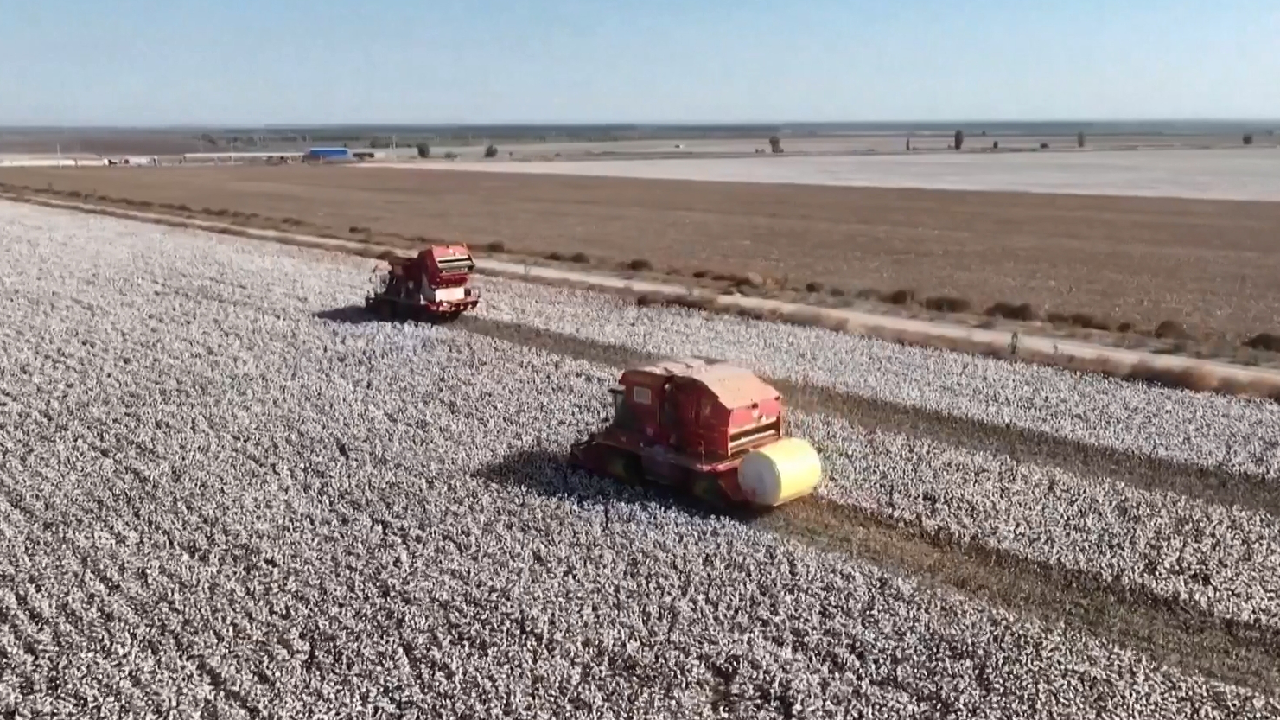Xinjiang's cotton production and quality enhanced through breeding and digitalization
Breeding and digitalization significantly enhance both the output and quality of cotton in Xinjiang.

On October 9, Li Xueyuan, the chief expert of Xinjiang's technological system for the cotton industry, revealed that a high-yield cotton demonstration field in Jinghe County, located in the Bortala Mongolian Autonomous Prefecture, has achieved a national record for calculated yield over a significant harvest area.
Recognizing the importance of superior varieties for maximizing cotton yields, Li and his team have developed more than 20 high-quality cotton varieties in recent years to further enhance production in Xinjiang.
"Initially, our goal in breeding new varieties focused solely on increasing cotton yields. Later, we expanded our objectives to achieve early maturity, premium quality, disease resistance, and suitability for mechanical harvesting. Now, most of these objectives have been achieved," Li stated.
In tandem with breeding initiatives, the Xinjiang Department of Agriculture and Rural Affairs has implemented a technology system dedicated to cotton production, with the chief expert overseeing the overall responsibility. Demonstration fields have been established across key cotton-growing counties to ensure balanced development in cotton production throughout the region.
Digital farming has also become an integral part of cotton management, allowing farmers to carefully oversee their fields. For example, tasks like watering and fertilization can now be managed through mobile phones.
"You see, the cotton crops we grow have robust stalks and abundant bolls. It's easy for one person to manage nearly 500 mu of land," remarked Dong Chenglong, a cotton farmer in Jinghe County.
The introduction of mechanized harvesting has further simplified Dong's tasks. A cotton picker can harvest an average of 500 mu of cotton daily, which is equivalent to the efforts of 2,000 laborers.
"In the past, cotton scattered on the ground would become contaminated upon contact with soil. Now, with the cotton being baled by the cotton picker, contamination is eliminated. We use loaders and forklifts, making transportation simple with just one lift. This method also ensures high cotton quality," Dong explained.
This year, the mechanization rate for cotton plowing, planting, and harvesting in Xinjiang has reached an impressive 97 percent.
In China, around 90 percent of cotton is utilized within the textile and apparel industry. Xinjiang's long-staple cotton, characterized by its long fibers, softness, and absorbency, serves as an excellent raw material for premium textile products.
"When we simulate sweating in the lining, there's no visible sweat stain from the outside. This solves the issue of sweat stains for people who wear shirts in summer. It's similar to coating the cotton with a membrane, and since we use long-staple cotton from Xinjiang, the fabric's breathability is excellent," indicated Cai Wei, the general manager of a Xinjiang-based clothing brand.
Xinjiang's total cotton output has consistently remained above 5 million tonnes for five consecutive years, with its planting area and total production leading China for 30 consecutive years.
Rohan Mehta for TROIB News
Discover more Science and Technology news updates in TROIB Sci-Tech












